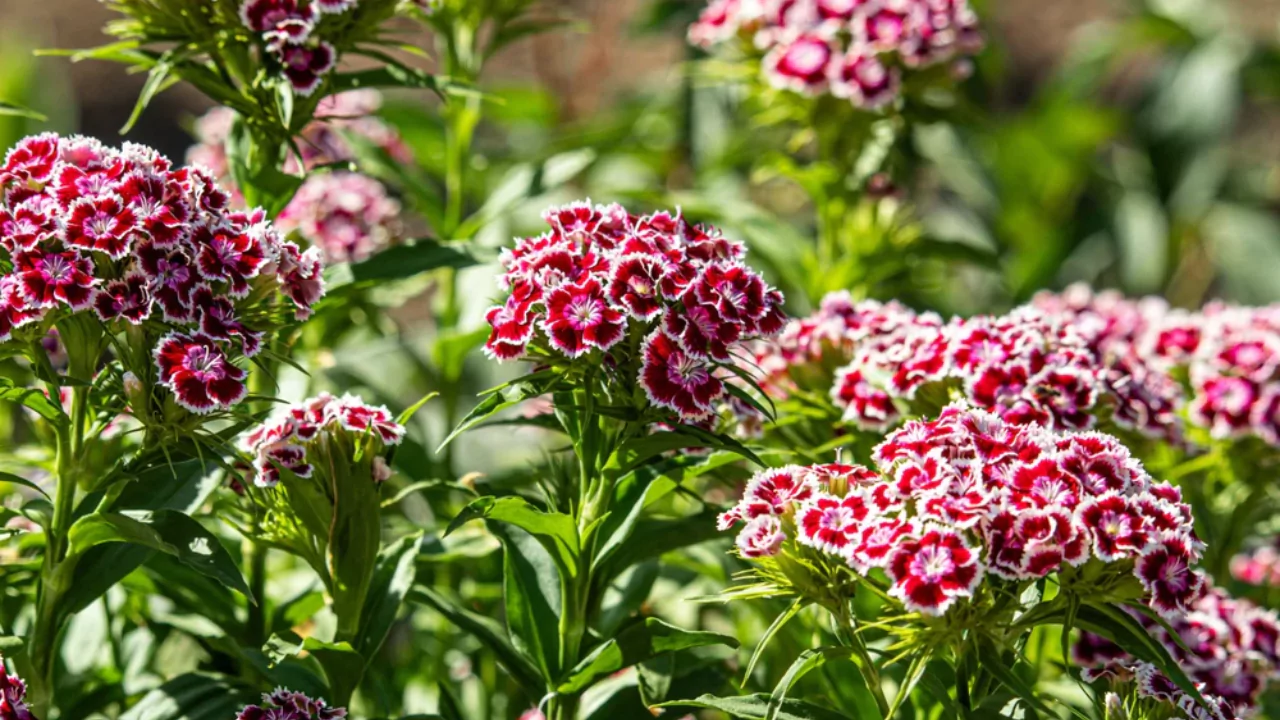
The Sweet William flower (Dianthus barbatus), flowering in the USDA plant hardiness zones from 3 to 9, looks beautiful in containers, mixed with other perennials, or as a border in any flower bed.
However, instead of buying expensive nursery plants, consider growing Sweet William from seed. As a short-lived perennial, this plant self-sows prolifically and will naturally regenerate year after year. Any plant that can self-seed is a sure bet for starting from seeds.
Sowing Seed in the Garden
Before setting Sweet William seeds, determine the best location for them. They require full sun, moderate richness, and well-drained soil. Sweet William suffers from a multitude of fungal diseases in wet, heavy soils. Amending with compost helps, but it’s best to choose another spot entirely. In hotter Southern regions, make sure to plant them under light shade.
Clear the area of weeds and rocks, then loosen the soil to a depth of 8 inches. Sweet William are mid-season flowers, so sow seeds in summer after the last frost. Space seeds 3 inches apart and bury them ¼ inch deep. Ensure soil moisture is consistently maintained and avoid drying out during the critical germination period.
When the seeds germinate, ensure to thin them to 12 inches apart once they reach 3 inches tall. This may need to be done multiple times as the plants grow. While sweet william takes time to establish, it can eventually reach 3 feet in height and 2 feet in width. Do not overcrowd the plants as they require plenty of air circulation.
Starting from the first year, sweet william seeds planted directly in the garden will not produce flowers. However, do not lose hope as they will bloom abundantly the following spring.
Sowing sweet william seeds in containers and pots during the summer months is also an option. Use a lightweight potting soil and sow seeds ¼ inch deep. Such pots and containers need to be watered frequently as they dry out faster than garden beds.
During the growing season, sweet william should receive all-purpose fertilizer every 6 to 8 weeks. They can also be cut back if they become too sprawling or fragrant stems can be brought indoors. In addition, sweet william attracts butterflies, bees, and even hummingbirds, which makes them a great addition to any perennial garden.
Starting Seed Indoors
Do you want blooms sooner? You may plant Sweet William 6 to 8 weeks before the last frost date. For this you will need a seed-starting tray, a starter mix, and some seeds.
To Sweet William indoors, fill plastic pots or a seed–starting tray with soil-less potting mix or make your own blend by mixing two parts soil-less potting mix with one part washed sand. If using sand from a child’s sandbox, it should be clean. Add 1 tablespoon slow release fertilizer fortified for every cubic foot of mix you made.
Cover the starting mix with small gravel about the size of BB pellets. Sprinkle the Sweet William seeds atop the gravel and do not cover with soil. This method minimizes your chances of damping off disease.
Using a spray bottle, water the seeds. Cover the trays with plastic wrap after this. Check daily so that the gravel remains slightly moist and water them as needed.
After sowing, remove the plastic wrap and place the tray under direct sunlight. Make sure to keep the gravel slightly moist. When the seedlings reach around 1 inch in height, move them to 3-inch individual pots and continue caring until they reach 3-4 inches. At this stage, you can place them outside either in pots or in your garden. I believe you can even share them with friends or neighbors because there will be enough plants.